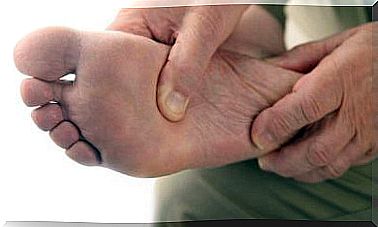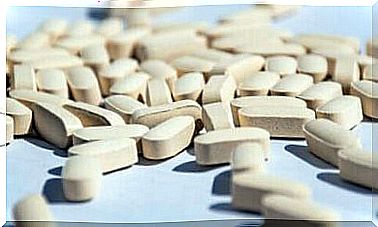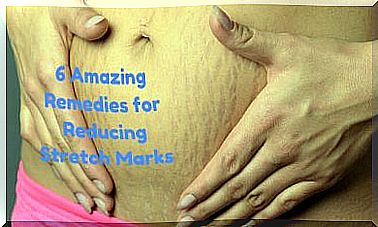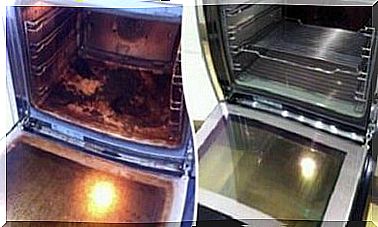How To Treat Hives In Children

Most of the time, urticaria occurs in children as a result of an allergic reaction on the skin. In this case, it is not typical red bumps on specific areas of the body, but rather large lesions, which are distributed over large areas of the skin.
Allergenic substances are the ones that trigger an allergic reaction and they are different for each person. For example, a child may suffer from hives due to dust, but their siblings may not show any reaction to it.
Hives in children: The primary symptoms
As mentioned earlier , hives refer to a major allergic reaction that affects large areas of skin. It occurs shortly after being in contact with irritating substances that can be found in the environment, clothing, air, soil and hair from animals.
Itching is one of the primary signs of hives. It is in fact an itch that is so intense that it forces the scratch and even involves a risk of injury. That way , bacteria can enter there and reproduce, leading to greater infection in the area.
Blemishes and bumps on the skin can be seen, unlike other milder allergic reactions. Swelling does not begin many hours after exposure, and it is sometimes immediate (begins within a few minutes). This indicates a possible allergic shock.
The size of the affected area varies from child to child. There may even be several parts of the body with active lesions at the same time. It is common on the face, hands, feet and groin. The upper body is no exception, especially in food allergies.
There are other symptoms associated with it in addition to skin problems. Let’s look at what they are.
- Vomiting and nausea. It comes from the same internal allergic processes that lead to inflammation of the lining of the stomach.
- Stomach pain. Sometimes it occurs along with mild fever. Other times, however, it is due to an increase in intestinal peristalsis, which tries to remove allergenic substances that have entered the intestinal tract.
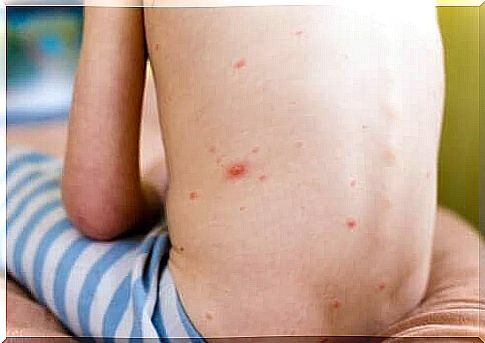
Common forms of allergy in pediatricians
Hives in children have many different causes. The origin is, as previously mentioned, to have been in contact with an allergenic substance. However, there are individual variations, which means that all children react differently to different allergens.
Most children are allergic to something specific. Here are some of the most common causes of allergies:
- Food. Some children are allergic to red fruits, others to eggs, and some are to certain spices and dressings. Generally, parents detect allergies when hives occur after ingesting the allergen.
- Insects. Insect bites are a possible source of allergic reactions. In these cases, the affected area becomes extremely irritated and it often spreads to other areas as well.
- Pollen from environments. With seasonal allergies, autumn and spring are the worst months for children. In addition to reactions on the skin, they often have coughs, sneezes, watery eyes, and even bronchospasm.
- Infections. In addition to the symptoms that come from the allergen, there are lesions due to cross-reaction between the immune system and the cells in the body. Both viruses and bacteria are responsible for this reaction.
- Medicine. Many children are allergic to certain drugs. It is important to be aware of what the child is taking. Most package leaflets have information and warnings about it, as it is often not the active substance that produces the allergy, but the excipients that come in pills or juices that allow them to be marketed.
- Perfume. Cosmetics and perfumes can be very irritating to the skin, which is why there are many different types of perfumes for children. However, if the baby’s skin is too sensitive, it is likely to react to all of them.
How to treat hives in children
First, hives in children are not always easy to diagnose. Once this is done, it is important that healthcare professionals provide allergy medication to counteract the symptoms. In the same way, the child can also make use of useful home remedies. This combination is excellent so the child can recover faster.
Antihistamines are very popular among allergy sufferers. In fact, most people like to take diphenhydramine and loratadine in case of allergies as they relieve itching and reduce redness on the skin.
However, it is not the best choice for children as they tend to make people drowsy. In extreme cases, however, they are used with caution at minimal dosages.
If the allergy spreads to many parts of the body, it may be necessary to add corticosteroids. It is important to talk to a pediatrician as these are the ones who will know if the case really requires it.
When used for a limited period of time, there should be no long lasting problems. Intramuscular and intravenous use is for urticaria only, which develops into allergic shock (which is rare).
Home remedies
When it comes to home remedies, there are many different options. Believe it or not, there are several ingredients that can be used to make wraps that relieve local symptoms, especially itching.
The easiest way to relieve allergy symptoms is by using cold cloths. The low temperatures reduce the irritation and redness, which then reduces the allergic reaction. It provides significant relief if used in conjunction with antihistamines and corticosteroids.
For prevention, it is important that the child avoids all the allergens to which they react. It is also important to adapt the bedroom where the child suffering from allergies sleeps. Therefore, their room should not have carpets or fabric that easily accumulates mites. It is also a good idea to add a dehumidifier to reduce dust.
In the case where the child develops hives due to food, simply remove the allergen from their diet. For babies under the age of two, there are substances (such as strawberries) that they should not ingest as a reservation, as they can be powerful allergens in some people.

Always talk to a pediatrician
That is the most important piece of advice here. Hives in children do not go away overnight. For that reason, it is important to talk to a pediatrician. Remember that a professional approach is essential to be able to know the cause and reduce the symptoms in a specific case.
If allergies often occur, one must be very careful with the likelihood of allergic shock. This is an emergency that often requires hospitalization and one should do everything one can to avoid it.

